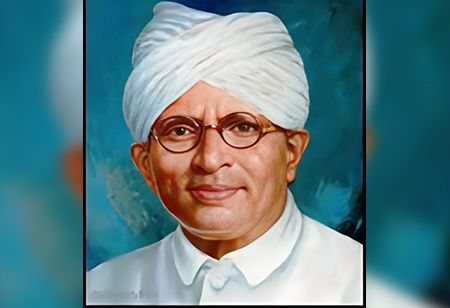
Walchand Hirachand Doshi: India’s Pioneer Industrialist Who Dared to Dream


Indian industrialists' legacy always has an impact on the economy and society. We have seen, since 1940, how HAL has led the way in innovation and made a substantial contribution to the development of aviation technology in India. An excellent illustration of HAL's dedication to domestic aircraft design and manufacturing is the creation of the Tejas LCA. But people often forget the legend behind the establishment of HAL. He is none other than the visionary industrialist Walchand Hirachand Doshi. He established HAL in Bangalore, India, in collaboration with Karnataka (before Mysore State) on December 23, 1940. Walchand Hirachand's achievements are not reserved for one sector; he built India’s first modern shipyard, the first aircraft factory, and the first car factory. During World War II, its main goal was to manufacture military aircraft to assist India's defense requirements. Following India's 1947 independence, HAL was taken over by the government and placed under the Ministry of Defence. Since then, it has made a substantial contribution to the nation's progress in aviation and aerospace. Let’s learn more about Indian luminary industrialist Walchand Hirachand.
Gist about the Legend
Walchand Hirachand Doshi is one of the names in the pantheon of great Indian business titans that seldom ever receive the credit it merits. Although the government did recognize the man with a postage stamp in 2004, he has mostly been forgotten in public debates. He was inspired by nationalists such as Justice M.G. Ranade and R.C. Dutt, and he concluded that India needed to invest in manufacturing instead of only providing inexpensive raw commodities like cotton.
He was a creator who was born 140 years ago and had the vision of a Jamsetji Tata and the spirit of adventure of Elon Musk. He possessed the maverick trait of constantly seeking out new fields to pioneer, but at his core, like many of the pre-independence Indian industrialists, he was a fervent nationalist who gave up the titles the British had given him to oppose Mahatma Gandhi's 1930 incarceration. In agreements like the Gandhi-Irwin Accord of 1931, he was not hesitant to request that political leaders also consider the interests of Indian industry.
Groundwork for India’s Industrialization
Walchand must be seen as a visionary who established the groundwork for the nation's industrialization. "In my opinion, in one word, Walchand was the creative genius," is how former president Dr. A.P.J. Abdul Kalam, who has inspired generations, brilliantly summed up.
Even by today's standards, when multi-business conglomerates are common in India, the scope of his ambition is astounding. It was nothing short of astounding in the 1920s when he was establishing the framework for his empire. He had launched businesses in a variety of fundamental industries, including civil engineering, shipbuilding, aircraft production, maritime shipping, and automobile manufacturing before sickness lay him low in 1950. Even though the government eventually nationalized many of his enterprises, they had already paved the path for a newly independent country and laid the foundation for many of the industries that exist today.
Birth History of Business Tycoon
Walchand was born in Solapur on November 23, 1882, into a Digambar Jain family that was involved in money lending and the cotton trade. He completed his matriculation at Solapur Government High School before relocating to Mumbai to complete his education at St. Xavier's College. He attended Deccan College in Pune to pursue another degree, but business was his real vocation. He chose to forge his path after beginning in the family business.
His first business endeavor was a railway contract, which resulted in the formation of the partnership firm Pathak & Walchand. Despite the company's success, Walchand wasn't the type to be easily placated. Newer horizons beckoned, and he eagerly embraced them with the fervor of a pioneer.
He showed resiliency throughout, which was likely bolstered by personal tragedy. His wife died in 1913 after giving birth to a daughter, and his mother died a few days after he was born. He was married again, but this time, he was plagued by bad luck, and both his son and daughter passed away too soon.
Nevertheless, he was unfazed by hardship, and at the time of independence, the Walchand group of firms was among the top ten largest corporations in the nation. His rich legacy includes companies like Hindustan Construction Company, Ravalgaon Sugar, and Premier Automobiles, even though its glaze may have faded over time.
Walchand: Man Who Dared to Dream
Located in the industrial township of Walchandnagar, close to Pune, Walchandnagar Industries Limited is a corporation that manufactures nuclear and strategic defense equipment. For Walchand, the industry was likely a location where he could have adventures in addition to earning money.
Although Walchand helped India establish a presence in a number of industries, his reliance on excessive leverage and nationalization appears to have detracted from the impact of his accomplishments. For instance, a trip to Hollywood gave him the idea to build the massive studio that is now known as Walchand Studio in India. He had previously discussed this idea with renowned Bollywood producer-director V. Shantaram, but there was no concrete outcome.
The 'SS Loyalty,' the first Indian ship, sailed from Mumbai to London on April 5, 1919, marking his first international journey. On board the ship was Walchand Hirachand himself. Since India became independent, April 5 has been declared the National Maritime Day to honor that voyage.
Throughout his life, he created a number of charity trusts to care for various causes, built new schools and boarding homes, and continued his charitable endeavors and sponsorships.
On April 8, 1953, Walchand Hirachand passed away at Siddhpur, Gujarat, without leaving any heirs. Relatives of his brothers, Gulabchand Hirachand, Lalchand Hirachand, and Ratanchand Hirachand, who collaborated until their deaths, currently manage his company.